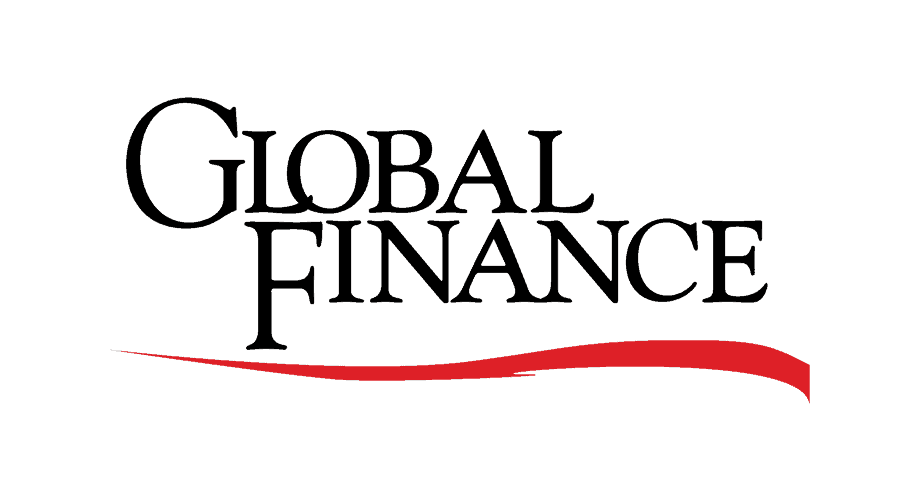Gradually, then Suddenly – The Coming AI Tidal Wave

Trump suggests lower tariffs on China … more AI-based layoffs … labor force pain “gradually then suddenly” … Eric Fry is eyeing nuclear power … cute tiger cubs
Let’s begin with the latest trade war chatter.
This morning, President Trump floated the idea of dropping the 145% tariff on China to 80%, while also hinting at additional deals on the way.
From Trump on Truth Social:
80% Tariff on China seems right! Up to Scott B.
Many Trade Deals in the hopper, all good (GREAT!) ones!
While lower, an 80% tariff would still largely be prohibitive to trade.
On that note, today, the first cargo ships carrying Chinese products hit with the 145% tariff arrived at Los Angeles ports. According to the port’s executive director, Gene Seroka, the volume of cargo on these ships has fallen by more than 50%.
Here’s Marine Insight:
Initially, 80 ships were scheduled to arrive in Los Angeles during May, but about 20% of those have already been cancelled.
Another 13 sailings for June have also been scrapped, a clear sign of businesses pulling back from sourcing goods from China due to cost concerns.
Flexport CEO Ryan Petersen explained that some retailers are opting to store goods in Chinese warehouses instead of bringing them to the US, as the storage costs are now lower than the import taxes.
Petersen estimated that if this continues, there could be a 60% drop in deliveries.
If/when too many deliveries disappear and the current inventory glut in U.S. warehouses dries up, that’s when we’ll face higher prices.
All eyes are on Treasury Secretary Scott Bessent and his negotiations with Chinese officials taking place in Switzerland this weekend.
We’ll report back on Monday.
On Wednesday, Cybersecurity company CrowdStrike announced it is cutting 500 jobs – roughly 5% of its workforce
Here’s MarketWatch with the explanation:
[Behind the layoffs is] both the security threat posed by artificial intelligence and the growing use of AI to move faster and operate more efficiently.
On Tuesday, The Wall Street Journal reported a similar story from tech blue blood IBM:
International Business Machines Chief Executive Arvind Krishna said the tech giant has used artificial intelligence, and specifically AI agents, to replace the work of a couple hundred human resources workers.
And just a few days ago, language-learning app Duolingo unapologetically cannonballed into AI. From TechCrunch:
Duolingo announced plans this week to replace contractors with AI and become an “AI-first” company — a move that journalist Brian Merchant pointed to as a sign that the AI jobs crisis “is here, now.”
Meanwhile, in January, a World Economic Forum (WEF) survey found that 41% of employers plan on downsizing their workforce over the next five years as AI automates certain tasks.
And here’s more color from the International Monetary Fund:
In advanced economies, about 60 percent of jobs may be impacted by AI.
Roughly half the exposed jobs may benefit from AI integration, enhancing productivity. For the other half, AI applications may execute key tasks currently performed by humans, which could lower labor demand, leading to lower wages and reduced hiring.
In the most extreme cases, some of these jobs may disappear.
What are we to make of all this?
Well, we’re not yet at the tipping point of AI’s economic creative destruction, but it’s coming.
“Jeff, stop right there. No fearmongering. If AI is such a job threat, explain why our unemployment rate remains at just 4.2%”
Well, first, while high-profile companies like IBM and CrowdStrike are making AI-related cuts, they represent a small slice of the overall labor market. Most AI-related layoffs so far have hit white-collar or tech jobs that are only a portion of the broader workforce.
Plus, job losses are being offset by new jobs in areas like healthcare, construction, hospitality, and transportation, which aren’t as vulnerable to AI… yet. For example, so far in 2025, service sector job growth has remained solid.
Next, many laid-off workers are finding new roles, often in companies adopting AI but needing people to manage, prompt, or train the systems. In other words, for the time being, AI is being used to augment rather than replace workers. So, many companies are restructuring workflows rather than eliminating full positions.
But let’s be clear…
This is a phase. It’s a temporary evolution point – not an end point.
An analogy comes from Ernest Hemingway’s novel “The Sun Also Rises.” When asked how he went bankrupt, a character replies, “Two ways. Gradually, then suddenly.”
The problem with “Jeff, stop fearmongering” is that is focuses on the “gradually” that’s here today, rather than the “suddenly” that’s coming tomorrow.
Legendary investor Louis Navellier has been researching this transition from a cultural, economic, and investment perspective
It was through Louis and his team that I was introduced to the term “double exponential.”
Originally used (in the context of technology) by futurist Ray Kurzweil, author of “The Singularity is Near,” the term describes the idea that technological progress doesn’t just follow a single exponential trend but often accelerates at an even faster rate.
“Double exponential” growth means that not only is the growth rate increasing, but the rate at which it increases is also accelerating.
Here’s Louis tying this idea to our economy and labor market:
Today, we find ourselves at a moment I call the “Economic Singularity.”
This is the moment when AI crosses a threshold and makes most human labor economically irrelevant.
We’re past the point of no return. AI is improving itself now. It’s creating its own agents. And writing its own code.
What comes next?
In short, the biggest transformation of wealth and labor in human history…
Folks, I know this sounds dramatic, but I’m telling you straight.
It’s the way innovation works. It happens slowly at first… and then, all of a sudden, everything is different.
To Louis’ point about human-labor irrelevancy, let’s check in on a key economic “canary in the coal” mine: software developers.
For years, these tech hires commanded fantastic salaries as they wrote the code that powered our cutting-edge software products. This was a next-gen, in-demand career.
With this context, let’s jump to Anthropic CEO Dario Amodei from March:
If I look at coding, programming, which is one area where AI is making the most progress – what we are finding is that we’re 3 to 6 months from a world where AI is writing 90% of the code.
And then in 12 months, we may be in a world where AI is writing essentially all of the code.
Louis makes an important point: You don’t have to like this change – but you must choose how you’ll respond to it.
To help investors safely cross this AI Rubicon, Louis just released a new batch of research.
As part of it, there are four special reports covering )1 the top stocks for this age of the Singularity, 2) which physical AI (think “humanoids/robots”) to buy today, 3) a “Complete Portfolio Protection” Plan, and 4) how to find pre-IPO, potential Unicorn AI investments before they’ve gone public.
You can learn more about accessing all this by clicking here.
By the way – be sure to catch tomorrow’s Digest by our Editor-in-Chief and co-Digest writer Luis Hernandez. He names one of Louis’ recent AI picks.
Here’s another idea for AI preparation, courtesy of our macro expert Eric Fry
As we’ve been hammering home in the Digest for months, AI consumes enormous volumes of energy. This demand will only increase as AI continues to integrate seamlessly with our day-to-day lives. We’ve urged investors to get exposure to the broad AI datacenter ecosystem that powers this demand.
Eric has been positioning his readers for this for many months in his flagship newsletter Fry’s Investment Report.
Let’s jump to his update from Wednesday:
Artificial intelligence relies on data centers to handle its computational needs. AI requires immense amounts of processing power for training and running large language models (LLMs), and data centers provide this power.
But there’s a problem: As we get further and further down the Road to Artificial General Intelligence (AGI), the technology demands such spectacular volumes of electric power that existing sources are not able to provide enough.
During the last three years alone, the combined electricity consumption of data center giants like Amazon.com Inc. (AMZN), Meta Platforms Inc. (META), Microsoft Corp. (MSFT), and Alphabet Inc. (GOOGL) soared more than 80%.
That explosive growth is certain to continue.
This shortfall is an opportunity for investors who know where to look. So, where’s Eric looking?
Nuclear energy.
On Wednesday, nuclear developer Elementl Power reported that it signed an agreement with Google to develop three sites for advanced reactors.
This comes on the heels of Google’s deal announced in October with Kairos Power, a developer of “small modular reactors” (SMRs).
Plus, Eric notes that around the same time that Google inked its deal with Kairos, Amazon announced that Amazon Web Services (AWS) is set to invest more than $500 million in nuclear power.
And in September, Microsoft made a deal with Constellation Energy Corp. (CEG) to restart a reactor at the infamous Three Mile Island nuclear facility.
With this background, here’s Eric:
This new high-profile demand for nuclear power from Big Tech and, sooner than we think, AGI could accelerate growth and profitability in the uranium industry.
To capitalize on that potential, I recommend investing in what’s turning into one of the “soundest” plays in the stock market: the uranium sector.
One name for your research that Eric mentions is Cameco Corp. (CCJ), one of the world’s largest uranium producers.
It has high-grade assets such as the McArthur River and Cigar Lake mines that offer significant cost advantages over competitors. Plus, it has a 49% stake in Westinghouse Electric, giving it exposure to the growing demand for SMRs, which Eric highlighted a moment ago.
I’ll also note that CCJ is in the middle of a blistering rally. Since April 9, it’s exploded 36%.
Other ideas for your research include Uranium Energy (UEC), Energy Fuels (UUUU), and Centrus Energy Corp (LEU).
For more on the specific way Eric is investing in Investment Report, click here to learn more about join him. He recently recommended a unique energy play that should be a direct beneficiary of snowballing AI adoption.
Wrapping up, if you remain skeptical about the significance of AI and the need for preparation…
Then I’d point to comments from the “Godfather of AI,” Geoffrey Hinton, made less than two weeks ago.
If you’re less familiar with Hinton, he earned his nickname due to his groundbreaking work in artificial neural networks, particularly his contributions to the development of deep learning.
From Hinton in his recent CBS interview:
People haven’t got it yet. People haven’t understood what’s coming…
The best way to understand it emotionally is we are like somebody who has this really cute tiger cub.
Unless you can be very sure that it’s not gonna want to kill you when it’s grown up, you should worry.
A tweak on Hinton’s comments…
Let’s not worry – that’s pointless and accomplishes nothing. Instead, let’s be deliberate about preparation.
On a general basis, there’s a limit to what that means. But from an investment perspective, there are plenty of moves we can make today to shore up our economic vulnerability.
If you haven’t done so yet, carve out some time to dig into how you’re preparing for AI today.
Have a good evening,
Jeff Remsburg
















